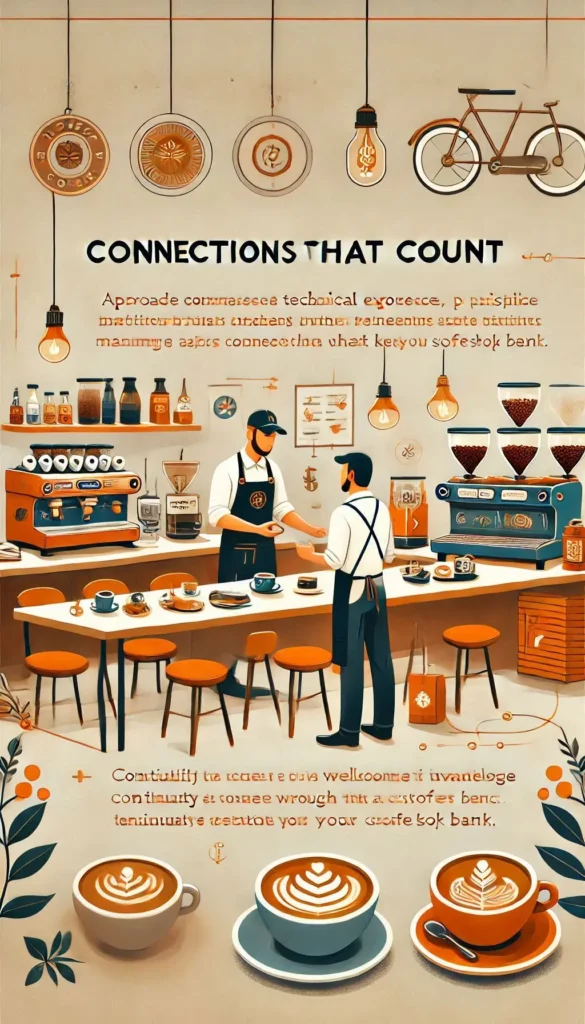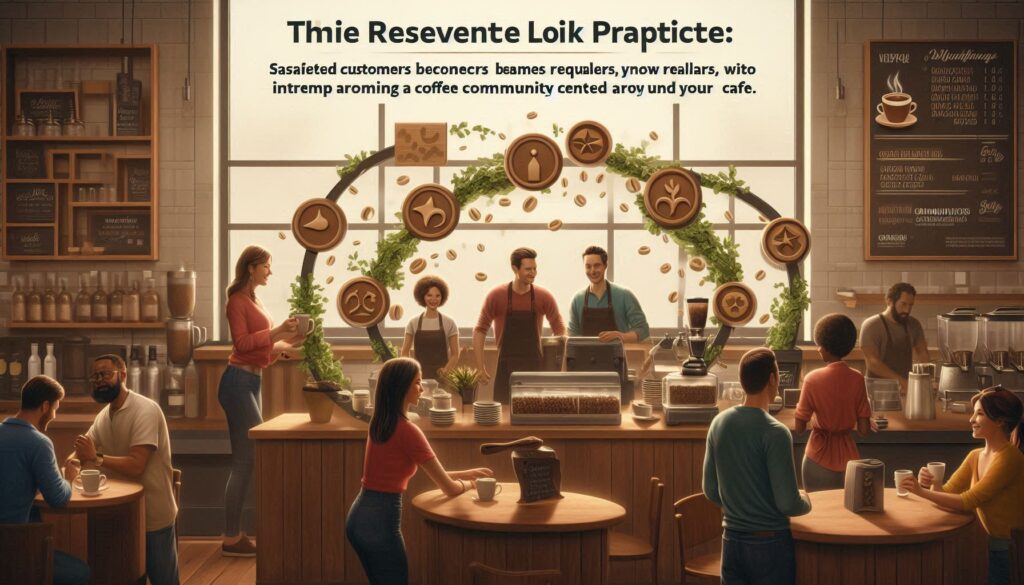Learn how to build a customer-centric coffee culture with proven tips from a 7-year Starbucks veteran. Discover essential strategies to enhance customer service, boost loyalty, and create memorable coffee experiences.
Are you aspiring to become an exceptional barista? While mastering coffee brewing techniques is crucial, creating an inviting atmosphere that puts customers first is equally important. Drawing from my seven years of experience at Starbucks, I’ve learned that outstanding coffee service combines technical expertise with genuine customer care.
Understanding Customer-Centric Coffee Culture
A customer-centric coffee culture prioritizes the human experience over product delivery. While exceptional coffee quality remains essential, the focus shifts to creating meaningful connections and memorable experiences. This approach recognizes that each customer brings unique preferences and needs to your café, requiring personalized attention and care.

8 Essential Strategies for Building a Customer-First Coffee Experience
1. Master the First Impression
Creating a welcoming environment begins the moment a customer walks through your door. Your initial greeting sets the tone for their entire experience and can determine whether they become a regular customer.
Key practices:
- Acknowledge customers within 10 seconds of entering
- Use genuine, warm facial expressions
- Maintain an open, welcoming posture
- Project your voice clearly and warmly
- Pause current tasks (when possible) to give full attention
- Use time-appropriate greetings (Good morning/afternoon/evening)
- Remember that non-verbal communication is as important as verbal
2. Develop Active Listening Skills
Active listening is a crucial skill that differentiates exceptional baristas from good ones. It’s about more than just hearing orders – it’s about understanding customer preferences and anticipating needs.
Essential components:
- Maintain appropriate eye contact to show engagement
- Use confirming phrases (“I understand,” “Let me make sure I got that right”)
- Pay attention to tone and body language
- Take detailed notes for complex orders
- Ask specific follow-up questions about preferences
- Mirror back orders with all specifications
- Watch for non-verbal cues indicating confusion or uncertainty
3. Communicate with Clarity and Engagement
Clear communication builds trust and ensures accuracy in order fulfillment while creating a positive atmosphere.
Communication strategies:
- Use appropriate volume and pace based on the environment
- Break down complex drink options into understandable terms
- Explain preparation methods when relevant
- Provide clear timing expectations
- Use positive language (“I can” instead of “I can’t”)
- Share knowledge about coffee origins and preparation methods
- Guide customers through menu options without overwhelming them

4. Maintain Efficient Operations
Efficiency doesn’t mean rushing – it means creating smooth, predictable experiences for customers while maintaining quality.
Operational excellence includes:
- Implementing standardized drink preparation sequences
- Maintaining clean and organized workstations
- Preparing common ingredients in advance
- Managing queue times effectively
- Coordinating with team members during rush periods
- Having backup plans for equipment issues
- Maintaining stock levels throughout shifts
- Regular cleaning and maintenance schedules
5. Deliver Personalized Experiences
Personalization transforms a transaction into an experience and helps build lasting customer relationships.
Personalization techniques:
- Create detailed customer profiles (preferences, allergies, usual orders)
- Offer customization options proactively
- Remember special occasions when mentioned
- Provide tailored recommendations based on past orders
- Create special drinks for regular customers
- Offer samples of new products to matched preferences
- Follow up on previous recommendations
- Address customers by name when appropriate
6. Remember and Adapt to Customer Preferences
Understanding and adapting to individual preferences shows customers you value their business and care about their experience.
Key strategies:
- Maintain a mental database of regular customers’ preferences
- Notice and record seasonal changes in ordering patterns
- Track popular modifications to standard drinks
- Create shorthand notes for complex regular orders
- Develop systems for sharing customer preferences among staff
- Recognize when preferences might be changing
- Suggest variations based on known likes/dislikes

7. Handle Mistakes Professionally
How you handle mistakes can turn a negative experience into a positive one and build stronger customer relationships.
Error management approach:
- Acknowledge mistakes immediately without excuses
- Take ownership of the situation
- Offer clear solutions and alternatives
- Follow up to ensure satisfaction
- Document common issues to prevent recurrence
- Train staff on proper recovery procedures
- Use mistakes as learning opportunities
- Implement feedback to improve processes
8. Uphold Professional Standards
Professionalism creates an environment of trust and reliability that customers value and respect.
Professional standards include:
- Maintaining consistent personal presentation
- Following health and safety protocols meticulously
- Using appropriate language and tone
- Respecting customer privacy and boundaries
- Maintaining clean and pressed uniforms
- Practicing proper hand hygiene
- Keeping workspaces spotless
- Maintaining professional boundaries while being friendly
- Showing respect for all customers regardless of order size or complexity

The Impact of Customer-Centric Service
Implementing these practices creates a positive feedback loop: satisfied customers become regulars, who then introduce new customers to your café. This organic growth builds a thriving coffee community centered around your establishment, fostering long-term success through customer loyalty and word-of-mouth recommendations.
The benefits include:
- Increased customer retention
- Higher average ticket values
- More positive reviews and recommendations
- Stronger community presence
- Better workplace atmosphere
- Reduced customer complaints
- Higher team morale
- Sustainable business growth
Conclusion
Excellence in coffee service extends beyond technical skill – it’s about creating meaningful connections and memorable experiences. As a barista, your role encompasses both crafting exceptional beverages and nurturing customer relationships. By mastering these customer-centric principles, you’ll contribute to building a café that customers cherish and return to consistently.
Remember: great baristas don’t just serve coffee; they create experiences that keep customers coming back for more than just their daily caffeine fix. Each interaction is an opportunity to strengthen your coffee community and build lasting relationships with your customers.
Start implementing these strategies today, and watch as your coffee service transforms from good to exceptional. Your customers will notice the difference, and your café will thrive as a result.








